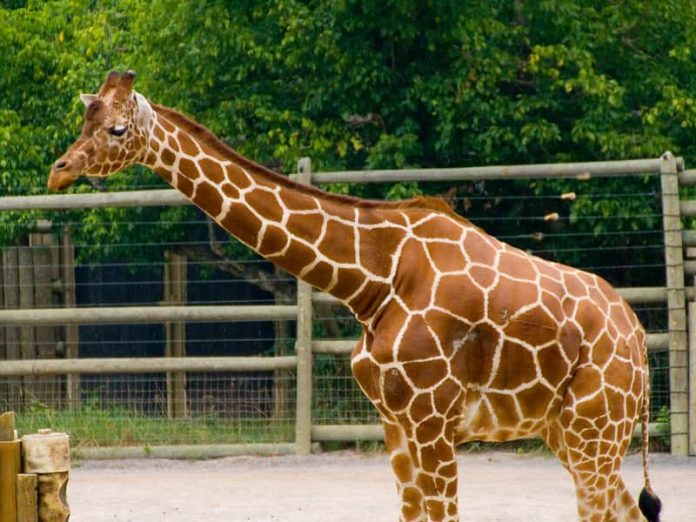
While we are at it, let us tell you that animals with four stomachs or animals with ‘four compartment’ stomachs are known as ruminant animals. Ruminant animals with their four stomachs have a different digestion process than humans, wherein the food moves through 4 different compartments of the stomach, instead of just one as in humans.
Let us understand the ruminant digestive system in detail. Post that, we shall present you with a list of animals with four stomachs and then with animals that have no stomach at all.
1) Rumen
The Rumen usually lies on the left of the animal and is the largest compartment of the stomach, holding a gargantuan amount of material. Consisting of several sacs, the Rumen is where the carbs are broken down; it also acts as storage where the feed collected by the ruminant animal is stored.
Apart from storing feed, the Rumen is the compartment where fermentation begins since the environment is favorable for the growth and sustenance of microbes. Papillae lining the edge of the Rumen increase the surface area of the Rumen, therefore allowing it to absorb more of VFAs obtained from fermentation.
2) Reticulum
The reticulum is yet another stomach compartment that favors fermentation and is linked to the Rumen in all ways. It is a pouch-like structure close to the heart, and it also helps break down food. However, the walls are slightly differently constructed for the breaking down of food.
All the heavy and calorically dense food is stored in the reticulum. The reticulum looks somewhat similar to a honeycomb due to the vast network of tissues that come together to give it the shape of a honeycomb.
The Rumen and the reticulum are separated from each other by a small tissue fold.
3) Omasum
The third compartment of a ruminant’s stomach is the omasum, where the bolus or the chewed food is stored before passing it down to the abomasum or the 4th stomach compartment. Although the function of the compartment is yet to be understood by biologists, we are given to understand that omasum absorbs water and other substances it can assimilate from the content digested in the stomach.
The crumpled paper-bag-looking structure contains leaves of tissue, similar to ones you see on a paperback. The ingesta between the leaves is drier in this particular compartment compared to the others.
4) Abomasum
The abomasum can also be considered the ‘true stomach’ of the ruminant, which is also an essential part of its digestive system. Before moving down the gut, the food moves through the abomasum – a compartment lined with glands where the acid prepares the ingesta and the protein for getting digested further.
The glands in the abomasum secrete HCl and other digestive enzymes that help break down protein and feed it from the ruminant. The abomasum in a ruminant’s stomach is comparable to the stomach of a non-ruminant organism, say, humans.
Animals with 4 Stomachs:
These five animals have 4 stomachs or 4 stomach compartments.
Cachalot Whale (Sperm Whale)
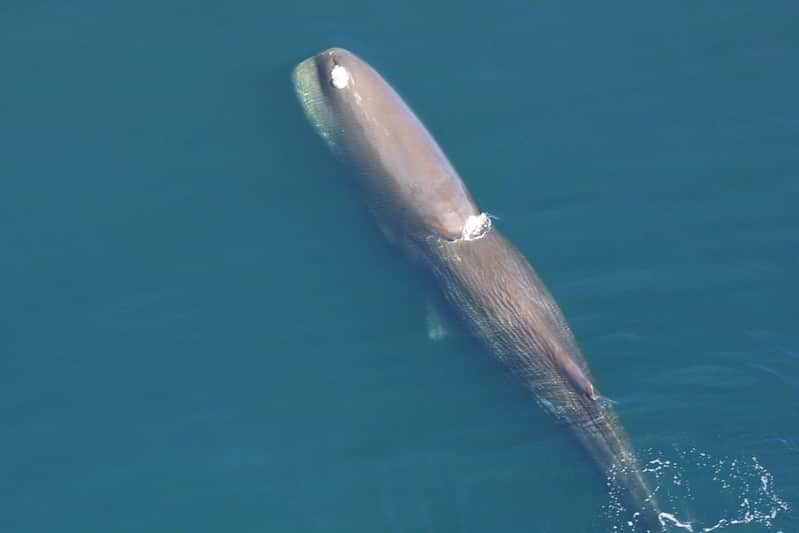
Cachalot Whales are known as one of the largest toothed predator whales in the world. Cachalot Whale is a ruminant with four stomachs that its narrow jaw and square head can easily recognize. They have dark blue-gray or brownish coloration and white patches on their bellies. An adult grows to an average height of 52ft in length. The head represents One-third of their body.
Cow
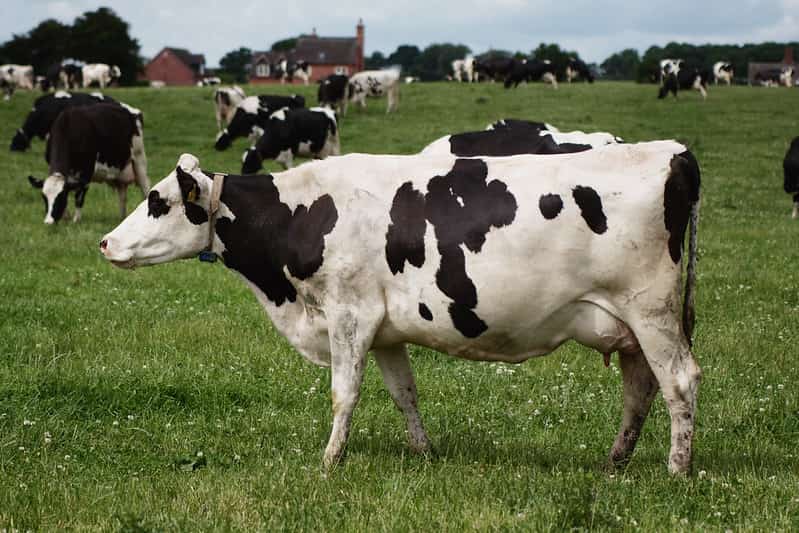
A cow has four stomachs, and the food that they eat undergoes a special digestive process. The process begins when a cow starts eating and chews its food just enough to swallow it. The unchewed food then goes to the Rumen and reticulum, which are the first two stomachs. When they get full from eating, they rest. After some time, the cow coughs out the bits of unchewed food to chew it completely and swallows it.
Now the food gets into the omasum and abomasum, the third and fourth stomachs where the food gets completely digested. A part of the digested food enters their bloodstream, and then it travels to the udder, where it is made into milk, and the rest of the food is utilized in the cow’s nourishment.
Deer
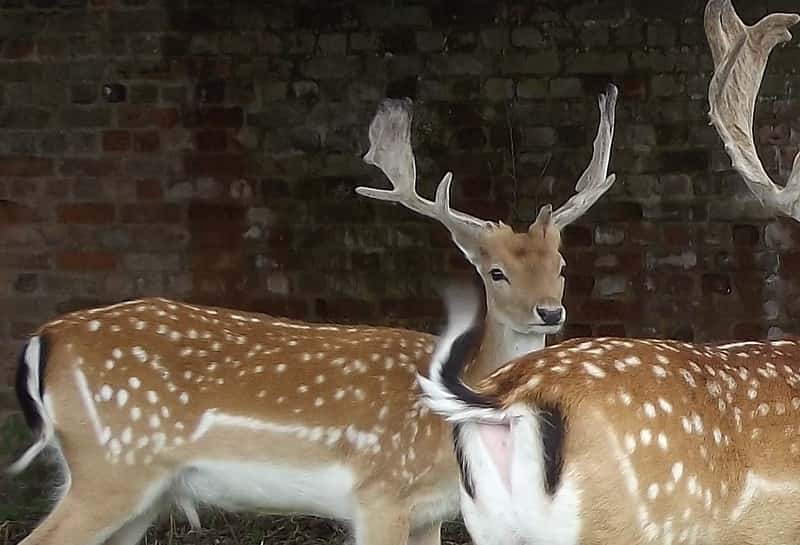
Deer have a specialized digestive system with four-chambered stomachs. A deer gathers a huge amount of food at once into its first chamber, called Rumen, to digest it later. The deer brings up the cud into their mouth and starts chewing it again. This chewing process is also called ruminating. After ruminating, the food is transferred to the reticulum, the second chamber.
The microorganisms live in the reticulum, where they break down the food into simpler form for deer to digest it – this process is called fermentation. The methane gas produced during fermentation must be discharged by the deer regularly. Plenty of the nutrition of a deer comes from the food with the microorganisms mixed within when they chew their cud again.
And after this, the food goes to the omasum, the third chamber for water absorption. And now the food reaches the final chamber, abomasum, where the gastric juices continue the digestion process. In the last stage, the food moves to the 28ft long intestine, where the deer’s body absorbs the nutrients.
Giraffe
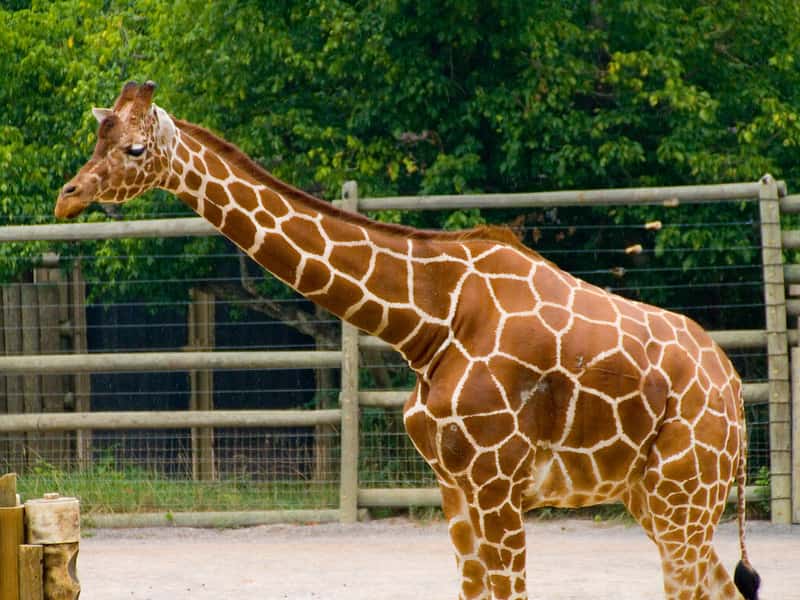
The tallest living terrestrial animal, the Giraffe, is also a ruminant, the largest ruminant. They are regarded as intelligent animals when it comes to food, and in addition, they have excellent eyesight. Like other ruminants, they also have four chambers in their stomachs.
They spend their daytime mostly eating, and they may eat up to 75 pounds of food per day. The four chambers help them digest, store food and store water in the acacia leaves. When a giraffe is not eating, it chews the cud which comes to the mouth through the throat in the form of a ball to get ground more finely.
Camel
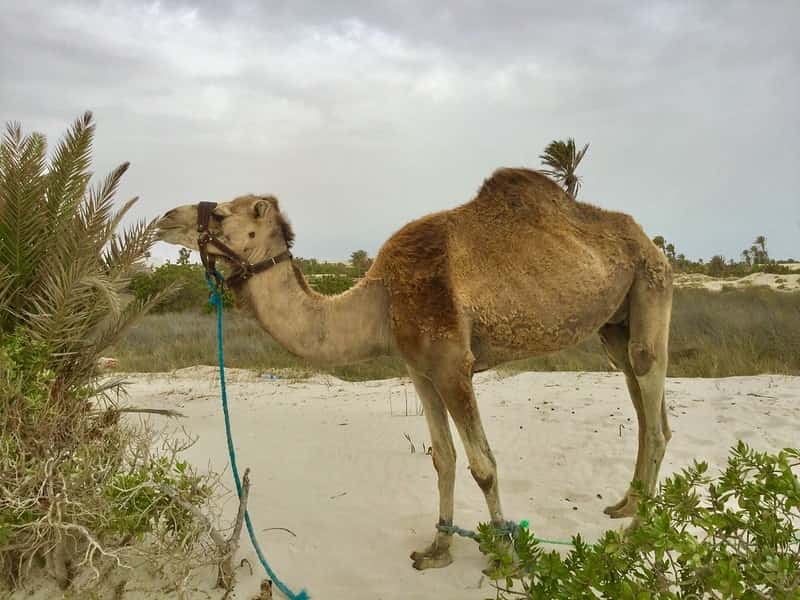
Having been domesticated for the last 5000 years by people living in sandy regions, camels were used for riding and carrying goods like meat, milk, and wool. They are naturally adapted to survive in the hot and dry deserts at high temperatures during the day and low at night.
Their thick coat protects them from extremely hot and dry conditions. Their rubbery lips help them to eat dry, prickly plants. Whenever food and water are available for camels, they consume them in large amounts and store them in their hump. And when there is no food or water available, they use their fat for energy which is the reason their humps become small and soft.
Being ruminants, camels don’t completely chew their food for the first time; rather, they store the unchewed food in the first chamber. Later, the cud returns to the camel’s mouth to get completely chewed, and then this cud is swollen and transferred to the other parts of the stomach for complete digestion.
Animals with no stomach:
Now that we have discussed animals with 4 stomachs let us have a look at animals that have no stomach at all.
Lungfish
Lungfish, from the subclass Dipnoi, are air-breathing dishes that have distinct anatomy characterized by the possession of one or two lungs.
Their peculiar mode of life and large body size, lacking a stomach, makes them an interesting creature to study.
The GI tract of the African lungfish is a composite structure that includes a gut, spleen, and pancreas, but the digestive system lacks a stomach. The gut is the evolution of the short esophagus.
Carp Fish
A Carp Fish is a large species of fish. The upper side of their jaw is lined with barbels on either side, and they have a bulky body which makes them heavy.
They grow up to 1-2 ft in length and weigh around 1-40 pounds. Their tail has two deep rounded lobes. The slightest difference between the males and females is that the males have larger fins on their bellies.
Their body color may vary from brassy green to golden brown, and some even have silvery. Carp Fish inhabit places like lakes, rivers, and quiet, weedy, mud-bottomed ponds. They feed on plants and animals like insects, mollusks, carrion, fish, zooplankton, nuts, and algae. Carp fish have no stomach – they chew their food with 5-5 molar-like pharyngeal teeth, and this chewed food is directly transferred to the intestine for absorption.
Paddlefish
These freshwater fish are also one of the largest fishes living in freshwater bodies such as rivers and lakes. They have cartilaginous skeletons and sharp body structures. Paddlefish are called so because of their paddle-shaped snout, which extends nearly one-third of their body length. Their mouth is quite large, and they also have a large and tapering operculum flap. They have their small eyes directed laterally. Their heterocercal tail or caudal fin resembles a shark.
The dull colorations of Paddlefish vary from bluish-gray to black on the dorsal areas and gradually whitish underbelly. Paddlefish is a filter feeder, and it doesn’t actually have a stomach. Just like other filter feeders, their diet primarily consists of zooplankton. They keep their mouths wide open while they swim and force the ocean water into their gills to filter out prey. They live in rivers, lakes, and dams and grow up to 1.5 lengths, weighing around 27kg.
Sturgeons
Sturgeons are known to be long-lived, late-maturing fishes. They have heterocercal caudal fins similar to those of sharks and are characterized by elongated, spade-like snouts. Sturgeons have a sleek shape with rows of bony plates on their sides. They have whiskers like sensory organs called barbels, which dangle near their mouth, helps in locating bottom-dwelling prey.
These species grow to an average length of 7-12 ft in length, feeding on clams, crayfish, insect larvae, and fish eggs. They are benthic feeders and don’t have teeth. Their Syphon-like mouth helps them to suck food, and then they swallow it.
Rays
The cartilaginous fishes of the order Batoidea are known as Rays. They mostly have a flattened body with a disc-like shape. Their wing-like pectoral fins are large, and these fins extend forward along the sides of the head. Rays have their mouth located on the underside of their body, characterized by five-gill openings. In many of the species of rays, their long and slender tail bears sharp, saw-edged venomous spines.
While feeding on their favorite snack, which is plankton, rays also feed on fishes and small invertebrates that they can prey on and kill. Rays being filter feeders, filter ocean water through the gills and collect their food.
Bichirs
Bichirs have an identical elongated body with a unique series of dorsal finlets on it. Instead of having a single dorsal fin, they bear 7to18 of the dorsal finlets. Thick and bonelike scales cover their body.
The bichir’s dorsal body part is gray-olive colored; the ventral sides are yellowish and lighter on the ventral side of the head. They grow up to 30-90cm in length and weigh around 7-10 pounds. They are nocturnal and forage for worms, aquatic insects, and small fishes at night. They inhabit estuaries, floodplains, muddy waters, and other low water habitats.
Platypus
Platypus, also referred to as duckbill platypus, are small amphibious and egg-laying mammals. They are also regarded as one of nature’s most unlikely animals.
A Platypus has bio fluorescent fur all over its body and over its broad and flat tail. Their dense and brown waterproof fur helps to trap a layer of insulating air which keeps them warm. With the help of their back ankles, the male platypus can deliver venom, produced as a defense mechanism by their immune system.
Being semi-aquatic animals, they inhabit mainly small streams and rivers. Platypus is carnivores and their diet primarily consists of shrimp, insect larvae, and annelid worms. They don’t have a stomach – they have a separate pouch to collect food and their esophagus is connected to their intestine directly where the food is digested.
Some Sharks
Some Sharks that are closely related to rays and skates also lack a stomach.
FAQs
Are there any animals with 3 and 8 stomachs?
No, there are no animals that have three or eight stomachs. So far, we have only known animals:
- That have four stomachs
- One stomach
- And animals with no stomach at all.
Which animals have teeth in their stomach?
It may sound ridiculous, but a number of crustaceans, including crabs, lobsters, and crayfish have teeth in their stomach to help crush food before digesting it.
Crabs and lobsters have large teeth in their stomach, which is a part of the digestive system called the ‘gastric mill’. By grinding these large teeth against each other, crabs and lobsters break down the large chunks of food to make the digestion process easier.
Apart from breaking down food, ghost crabs use these teeth in the stomach to rhythmically produce a sound that helps them ward off predators. When ghost crabs grind the stomach teeth against each other, they make a growling noise that acts as a sign of earning to scare away potential predators and threats lying close to their vicinity. These crabs may also use these sounds to communicate information about their physical attributes such as intent, aggression, and size of the predators.
Sources
- Why the Platypus Will Never Have a Stomach?
- RUMINANTS AND CAMELIDS DIGESTIVE OVERVIEW AND FORAGE FEEDING INSTRUCTIONS






